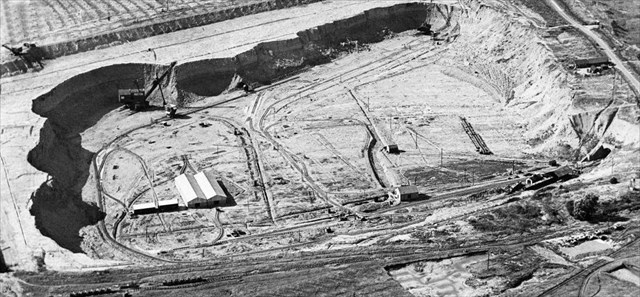MVT Bricks, dust and ancient clay (Stewartby) Traditional Geocache
Church Warden: As the owner has not responded to my previous log requesting that they check this cache I am archiving it.
If you wish to email me please send your email via my profile (click on my name) and quote the cache name and number.
Regards
Paul
Church Warden - Volunteer UK Reviewer www.geocaching.com
UK Geocaching Policies Wiki
Geocaching Help Center
MVT Bricks, dust and ancient clay (Stewartby)
-
Difficulty:
-

-
Terrain:
-

Size:  (small)
(small)
Please note Use of geocaching.com services is subject to the terms and conditions
in our disclaimer.
14 sept - PLEASE HANDLE WITH CARE. the cover is slightly damaged and if not out back carefully will expose the cache position. It is possible to recover gently. Whilst we sort out a replacement. Thank you.Muggle central please be careful Over the road is what remains of the brickwork area. Most of it has been flattened. The lake was made by flooding the clay pit. It is rumoured that some machinery is still at the bottom!
As an industrial process, making bricks is simple enough. Damp clay comes along five miles of moving belts from the clay pits and then goes into hammer mills and screening towers, where it's thumped and shaken down into a damp powder. Then, depending on the kind of brick you want to achieve (rustic, rustic antique, Georgian, Tudor), the powdered clay might be mixed with a pigment or sand to give it different colours and textures. A machine stamps the powder into "green" bricks which are driven across the yard to the heating chambers of the kiln, where they are stacked and the chamber walled up with a "wicket" of loose bricks rendered with a kind of mortar called pug. Heat flows into the chamber and for nine or 10 days the bricks bake at 950C. Then the wicket is demolished and the bricks taken over to the strippers, who knock way any imperfections and bind them up into the rectangular parcels, ready to be shipped.
There is heat and dust, when you climbed the stairs to the flat top of the kiln. An expanse about the size of a football field was covered in small triangular heaps of coal dust, placed alongside circular iron plugs with hoped handles. In one corner, a man moved from plug to plug, lifting each with an iron bar and feeding the holes they concealed with a ladle of coal dust. This man was called a "burner" and when he uncovered a hole, you looked down into the hot flames of the chamber under your feet. By adding the coal at regular intervals, he could raise or maintain the temperature. But the amounts of coal were tiny, like a sprinkle of salt
At its height, Stewartby brickworks was home to the world's biggest kiln and over 2,000 people worked at the plant producing 500 million bricks a year. The secret weapon was the "Fletton" brick, fired from Gault clay and later to become the standard building material throughout the southern part of England. Geologically-speaking, this Lower Oxford Clay is made up of 5% seaweed and as this organic material burned when the clay was in the kiln, it reduced the need for coal, and also ensured the bricks were evenly-fired.

Additional Hints
(Decrypt)
nggevohgr